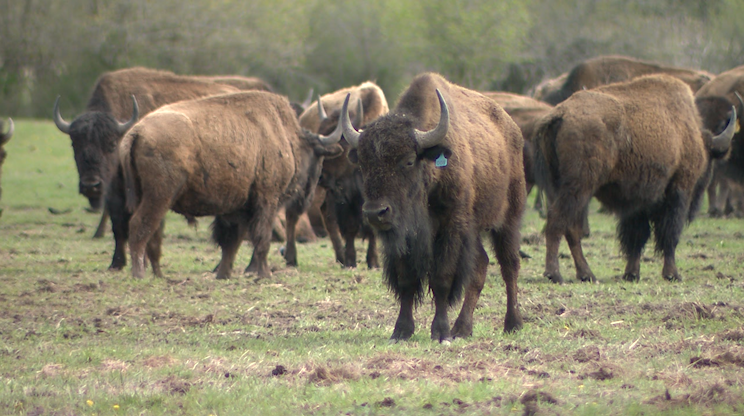As spring transforms the Inland Northwest with blooming trees, budding lilacs, and golden-yellow Arrowleaf balsamroot carpeting hillsides, another kind of renewal is taking place along the banks of the Pend Oreille River on the Kalispel Reservation.
The magnificent buffalo, symbols of the American West, are in calving season – a time of growth not only for the herd but also for the Kalispel Tribe’s cultural identity.
“The buffalo is important because it’s us taking control of our culture and our history and our sustainability as a tribe,” said Alec Bluff of the Kalispel Tribe.
While buffalo aren’t native to Washington state, the Kalispel people weren’t originally confined to their current reservation. Their ancestral territory once spanned millions of acres across Idaho, Montana, and northeast Washington.
“We traveled millions of acres across Idaho, Montana and northeast Washington, and we’re a plateau River people,” Bluff explained.
The Pend Oreille River, the lifeblood of the tribe, once delivered them far into Montana, where buffalo roamed.
“But now, you know, we can’t go to the buffalo,” Bluff said.
Instead, the buffalo have come to them. The animals first arrived on tribal lands in the early 1970s, and the herd has been growing steadily ever since.
“There’s about four calves that have been born right now. And hopefully 20 to 40 calves are born this season,” Bluff said.
Getting close to the newborn calves proves challenging, even for those who care for the herd. Miles Finley, who helps manage the buffalo, explained their protective nature.
“The moms typically keep them far away from us,” Finley said. “They typically really don’t let us get too close to them.”
The exception comes at feeding time, when the animals recognize their caretakers. “They’ll see these blue bags and they’ll come running,” Finley noted.
While the tribe does harvest some of the animals, raising the herd isn’t primarily about food production. It represents something much deeper for the Kalispel people.
“We’re not starving out here,” Bluff said. “But most importantly, it’s just a simple symbol of who we are. We lost a lot of stuff, a lot of cultural stuff in the past because originally, we were semi-nomadic. We lost places, food, plants, names to a lot of stuff and a part of reclaiming as a sovereign nation is our culture and our past.”
The tribe wants to share this cultural connection with the broader community. Visitors are welcome to see the buffalo in their natural habitat.
“You can come around and visit our powwow grounds and see them. You know, you don’t got to go to Yellowstone,” Bluff said.
For those interested in experiencing more of the Kalispel culture – including tasting buffalo meat – the tribe sells it locally. Additionally, the tribe extends an invitation to everyone for its annual powwow during the first weekend of August, which includes a special buffalo feed on Saturday.
COPYRIGHT 2025 BY KXLY. ALL RIGHTS RESERVED. THIS MATERIAL MAY NOT BE PUBLISHED, BROADCAST, REWRITTEN OR REDISTRIBUTED.
